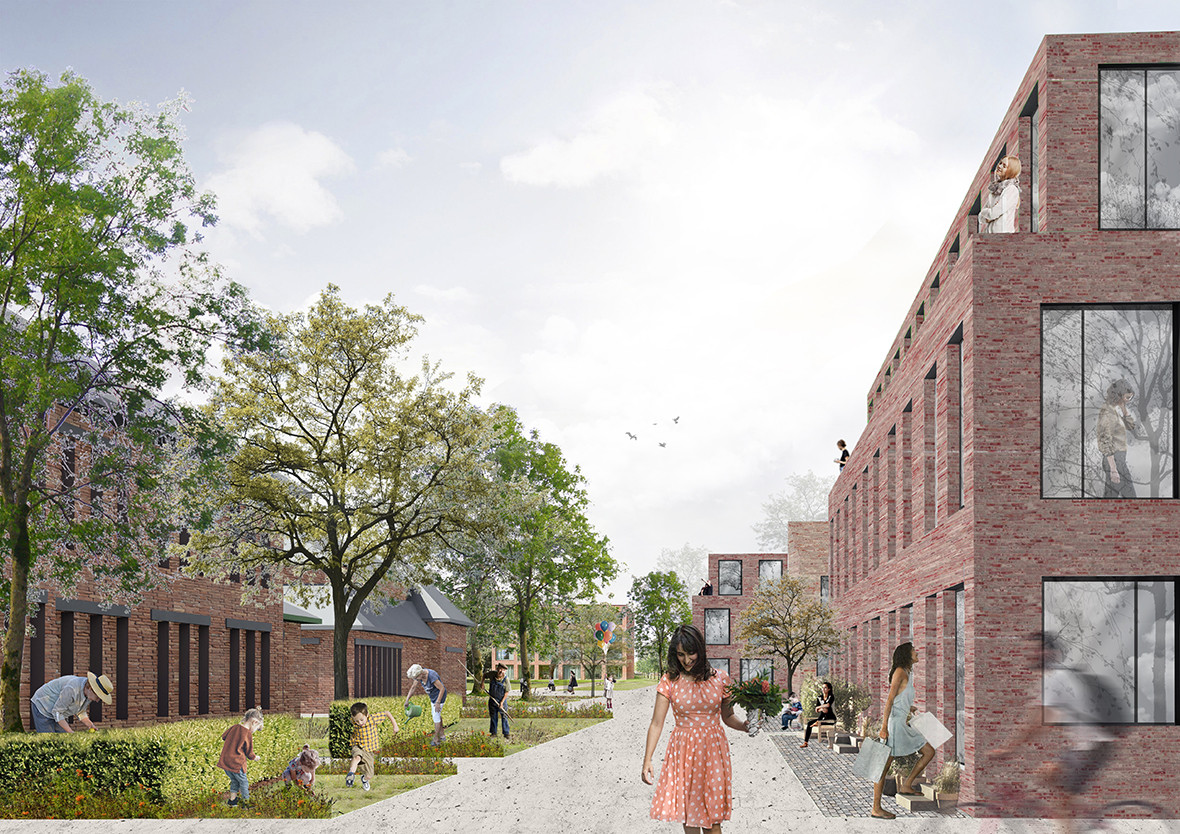


Starting next year, the former King Willem II barracks in Tilburg will be transformed into a residential area. This special new neighbourhood will offer a unique living and staying quality: diverse, lively and safe, with attention for redevelopment, sustainability and healthy construction. The fantastic architecture and structure of the Boost Barracks is an opportunity to create a strong identity within the development of the Stappegoor area.
The Willem II barracks district is part of the development of the Stappegoor area, located on the southern edge of Tilburg. Following a mini competition, the Municipality of Tilburg and Consortium Stappegoor (Synchroon/BPD Zuid) selected Karres and Brands’s urban design to be further developed. Central to the development of the new “Kazernebuurt”, or “barracks neighbourhood”, are the barracks, designed by A.G. Boost in 1939. This unique location, which was hidden from the residents of Tilburg for decades, will soon be accessible to everyone via the entrance to the main building. The design for the new residential area derives its character from the barracks as a whole. The main building, encampments and kitchen building may soon house a school, apartments, elderly care and day-care facilities.
The Kazernebuurt will become a place with a special living and staying quality. It is optimally accessible from the Tilburg city centre and other districts, especially by bicycle and public transport. And while the neighbourhood does facilitate car use, it also explicitly encourages the use of sustainable means of transport such as electric cars and bicycles. Cars and through traffic are thus not part of the street scene, enhancing the area’s estate-like character: social contact with the neighbourhood, collective outdoor spaces, children playing and plenty of green.
The new Kazernebuurt will strengthen the area’s green living environment and biodiversity by removing concrete and ensuring a green habitat for plants and animals. Throughout the entire area, an extensive water system will be woven into the green public space and buildings. Thanks to a sustainable and circular water system, where rainwater is locally infiltrated, purified, buffered, and, where possible, reused, the design also contributes to the area’s microclimate. Not only does this green-blue network strengthen the residential area’s natural character, it also acts as a connector between building, outdoor space and user.
Karres and Brands is currently working on the urban design for the Kazernebuurt. However, as long as the Willem II barracks are empty, the building will be temporarily used as a shelter for homeless people during the coronavirus. The municipality of Tilburg has made rooms available for people in need of a place to live during these difficult times.